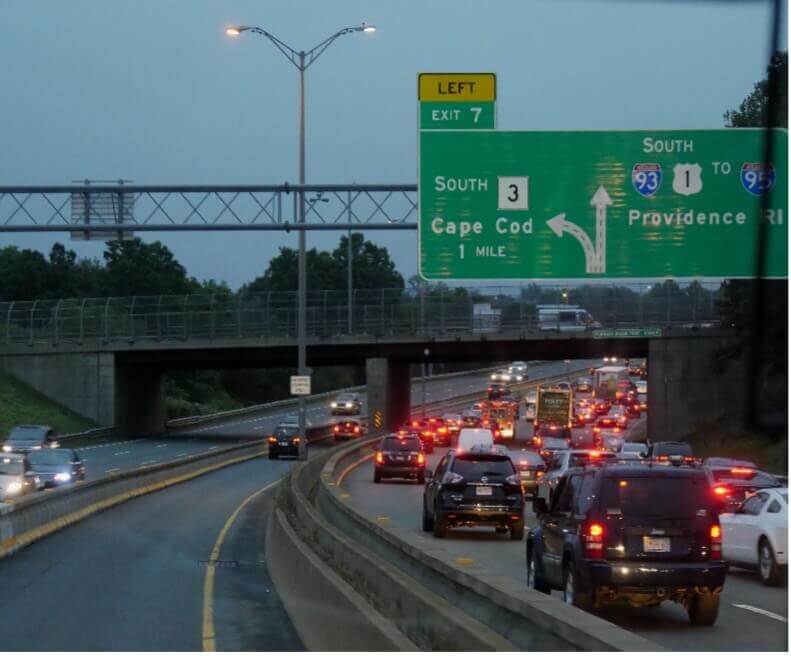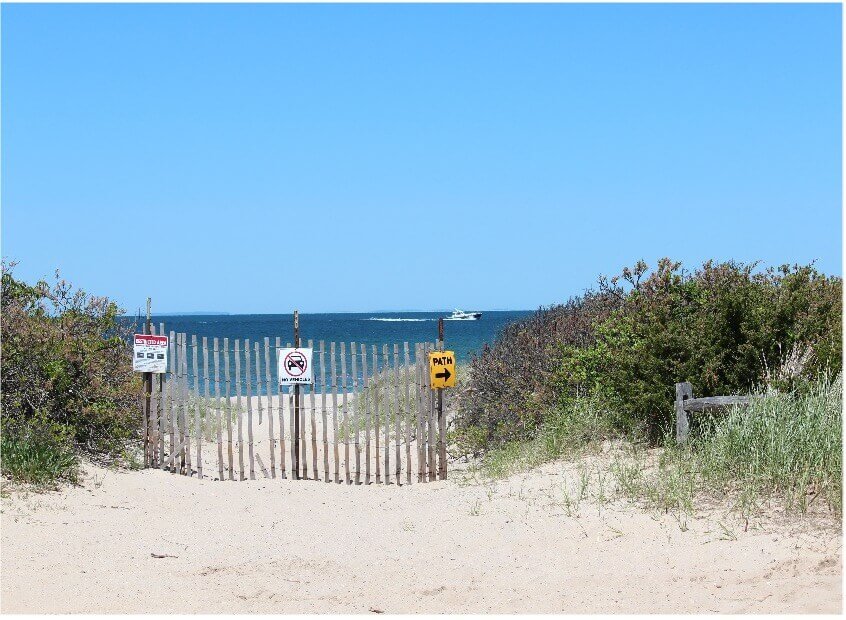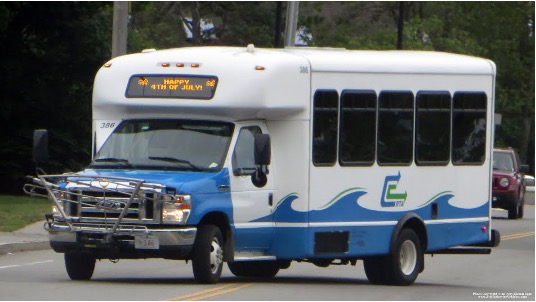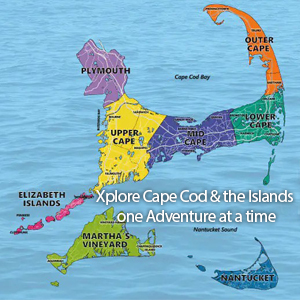Cape Cod is a beautiful tourist destination that promises expansive beaches, crystal blue waters, charming little villages, and fresh sea air.
 Taking a drive to Cape Cod can be great if you know what routes to take and what timings to avoid. From Providence, Rhode Island, Locals suggest taking the I-195 to Bourne Bridge to arrive there faster. From Boston, take I-93 South to Router-3 to the Sagamore Bridge. And from Western Massachusetts, Connecticut, and New York, take I-90 to I-495 to get to the Bourne Bridge. Mondays through Thursdays and Sundays (from 3-10 pm) are a few ideal days to drive there.
Taking a drive to Cape Cod can be great if you know what routes to take and what timings to avoid. From Providence, Rhode Island, Locals suggest taking the I-195 to Bourne Bridge to arrive there faster. From Boston, take I-93 South to Router-3 to the Sagamore Bridge. And from Western Massachusetts, Connecticut, and New York, take I-90 to I-495 to get to the Bourne Bridge. Mondays through Thursdays and Sundays (from 3-10 pm) are a few ideal days to drive there.
As you plan your next vacation to this picturesque shoreline, we want to answer all your questions about your drive there so that you’re well-prepared and your journey remains stress-free.
When can you drive to Cape Cod?
People drive to Cape Cod all year round. Since the location is a popular spot for vacationers, traffic can be pretty heavy. Consequently, one needs to consider peak times and holiday seasons to avoid potential traffic jams and delays.
There are some peak times you need to avoid. Ideally, the most suitable time to drive to the Cape is:
- Sunday from 3 pm to 10 pm. The traffic across the bridges to Cape Cod is not very crowded.
- Fridays before 2 pm or after 9 pm
- Saturdays before 8 am or after 2 pm
- Monday through Thursday
If you need to depart the Cape, these are the perfect times to do so:
- Monday – Friday
- Saturdays after 2 pm
- Sundays before 1 pm or after 9 pm
During peak season, which ranges from June to August, avoid arriving on Fridays between 2 and 9 pm or Saturdays between 8 am and 2 pm. When leaving, avoid Sunday or Monday from 1 pm to 9 pm.
TIP: A perfect day to get there is the day after Labor Day because the roads are pretty much abandoned. They get crowded again on weekends through Columbus Day. After Columbus Day, things are fine until May rolls around.
The perfect time to visit the Cape is during the spring months of April and May and the fall months of October and November.
When getting to Cape Cod, residents living there advise you to take the I-195 to MA 25/28 South and cross the Bourne Bridge. Don’t take the Sagamore Bridge because around 25% more cars use that route.
Can You Drive on Cape Cod Beaches?
 You can drive within most Cape Cod beaches–like the National Seashore–with an ORV permit and from North Nook Beach to Provincetown except during the local birds’ nesting season (June to July). Nauset Beach is usually closed but can be a great experience when open to the public.
You can drive within most Cape Cod beaches–like the National Seashore–with an ORV permit and from North Nook Beach to Provincetown except during the local birds’ nesting season (June to July). Nauset Beach is usually closed but can be a great experience when open to the public.
The Cape Cod National Seashore usually allows driving, but closures should be expected. A 7-day pass costs $50, while a yearly pass costs you $150. Nightly passes are $225/year or $75/week, respectively.
Nauset Beach, Orleans, is usually closed to protect the endangered birds on its shore, but it’s a fantastic place to drive around when open. Beach Access Stickers cost $66 for locals and $196 for everyone else, and a permit costs $266/year.
You’re typically allowed to drive from Long Nook Beach in Truro to Long Point in Provincetown. However, sometimes part of that route can be closed due to the birds’ nesting season (especially in June or July).
You can drive around on Coast Guard Beach from 6 pm to 7 am since it is very busy during the remaining hours.
In Barnstable, most of the eastern part of Sandy Neck Beach is vehicle friendly. You’ll need a beach pass and nightly pass if you plan on an overnight stay.
Chapin Memorial and Crowes Pasture beaches in Dennis also allow ORV on their sands. You’ll need an annual ORV sticker which costs $150 for residents and twice that for outsiders.
Requirements
You need an ORV permit and an All-Wheel Drive or 4 Wheel Drive to drive on the beach. While you can get a permit, it’s not advised if you’re planning to stay for just a day.
The procedures to get vehicle approval are lengthy—you’d need to get your vehicle inspected, possess the necessary safety equipment, and view a brief orientation video.
If you plan to stay at the Race Point Lighthouse, you must get an ORV permit, regardless.
TIP: Sometimes, your four-wheel drive can get stuck in “sugar sand” (soft sand), but with a little bit of digging, you can easily get it out. A trick is to go on already-worn tracks because that packs the sand down.
Some Safety Guidelines
- Know the tidal chart
- Lower your tire pressure to 11-15 psi for better traction
- Safety equipment includes a tire gauge, spare tire, shovel, tow straps, a jack, and a support board.
Do I need a Car in Cape Cod?
While it is preferred and more convenient to have a car of your own, you don’t need one.
You can get around with public transport. Cape Cod has a few public vehicles that make rounds every day.
CCRTA Buses and Shuttles
Buses and shuttles are one of the cheapest ways of getting around. One-way rides cost $2. For just $6, you can get a full-day pass and ride wherever you want.
 These buses offer transport every day, all year round. They’re air-conditioned and heated, and drivers are friendly.
These buses offer transport every day, all year round. They’re air-conditioned and heated, and drivers are friendly.
An advantage is that you don’t have to be at a bus stop to catch this bus. It can pick you up from anywhere. On these “flex” routes, you’ll be picked up/dropped off about 3/4th of a mile from a bus stop. You need a reservation for this service.
With their Dial-a-Ride Transport (DART), you can get a ride from door to door. DART service rates are $3/ride and $1.50/ride for senior citizens and disabled people.
Taxis
These are more expensive options. Bourne 24 Hour Taxi runs through the Upper Cape Area, Cape Taxi & Livery Company will transport you through the Mid-Cape area, and Central Cape taxi is for Harwich, Brewster, Chatham, Dennis, and Orleans.
Cape Cab runs through Dennis to Provincetown.
Trolleys
These “hop-on, hop-off” services are available in Sandwich, Hyannis, Falmouth, and Provincetown. They may even be extending to Chatham.
Are there Ubers in Cape Cod?
Uber started operating in Cape Cod in 2015. To avoid the peak period, try not to get one at these times:
- Friday-Sunday, 4pm-12am
- Saturday-Sunday, 12am-6am and 10am-4pm
Conclusion
You can drive to Cape Cod, and it can be a great way to move around the area but is not a complete must because other transportation alternatives like buses, Uber, and taxis are present.
There’s a lot to discover in this breathtaking place, especially if you venture out to its pristine beaches.
Keeping these logistics in mind, you can have a fantastic vacation at this scenic location. We hope you put this guide to use to draw up your plan for navigating Cape Cod.
Happy Travels!













This Post Has 2 Comments
Pingback: Going Your Way –Traveling By Bus On Cape Cod And The Islands
Some of the taxi companies you’ve listed no longer exist, and it is never preferable to have a car on the Lower Cape where there are few main roads and there’s limited parking. For taxis you still have Cape Cab, but you also have Black & White Taxi http://www.provincetownrides.com/ and Atlantic Rides http://www.atlanticridesptown.com/